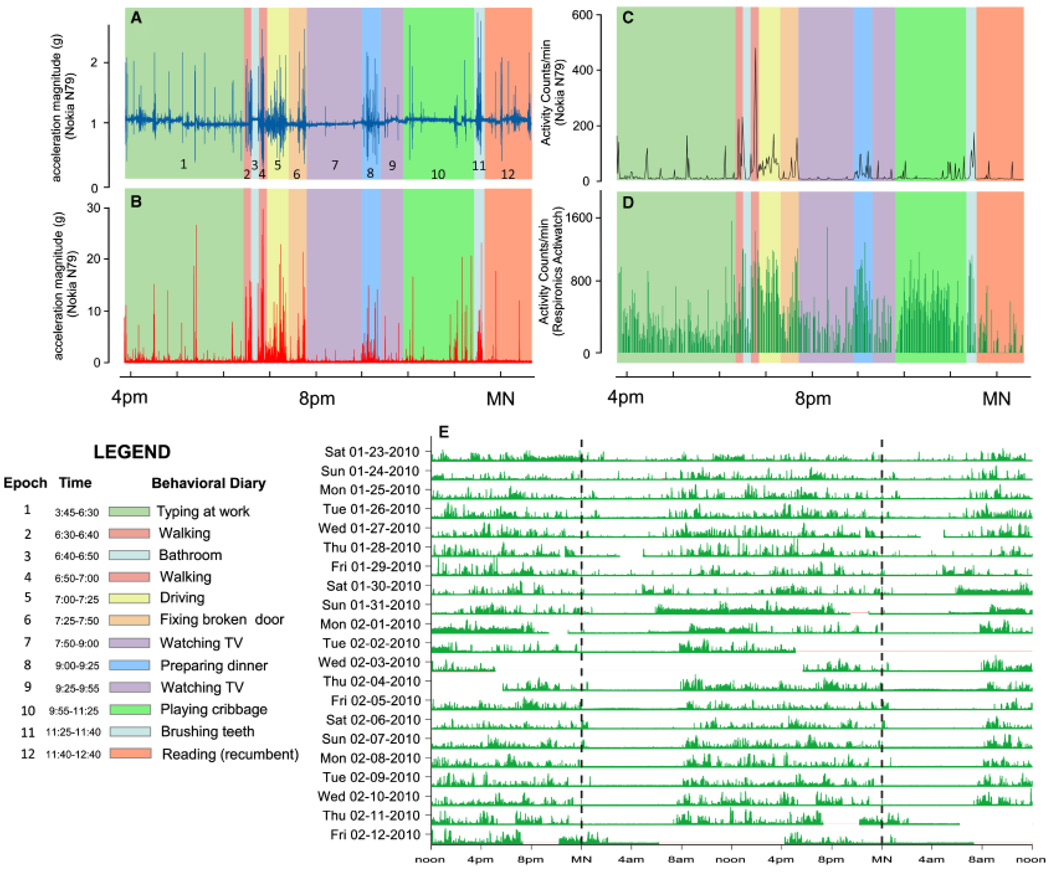Figure 1.
Cellular telephone accelerometer has high face validity for measuring individual activity. (A) Magnitude of unprocessed signal from accelerometer as a function of time, matched to participant activities manually logged on diary; color and numerically coded per legend. Ethogram generated using participant log. (B) Accelerometer signal after passage through a 50-component finite impulse response filter. (C) Accelerometer signal from B integrated over consecutive 1-minute bins to determine activity counts. (D) Simultaneous activity counts measured using an ActiWatch-L. The cellular telephone–derived actimetry signal of C during epochs of low physical activity (7:50–9:00, 9:25–9:55, 9:55–11:25) has a higher face validity than the wristwatch actimeter signal of D. (E) Double-plot actogram of participant activity over 21-day observation period. Activity counts (depicted in green) calculated as described in the Methods section. Missing data depicted as breaks in the activity trace and account for approximately 8.4% (42.5 hours of the total 504 hours) observation. Dotted lines are at midnight Central Standard Time.

